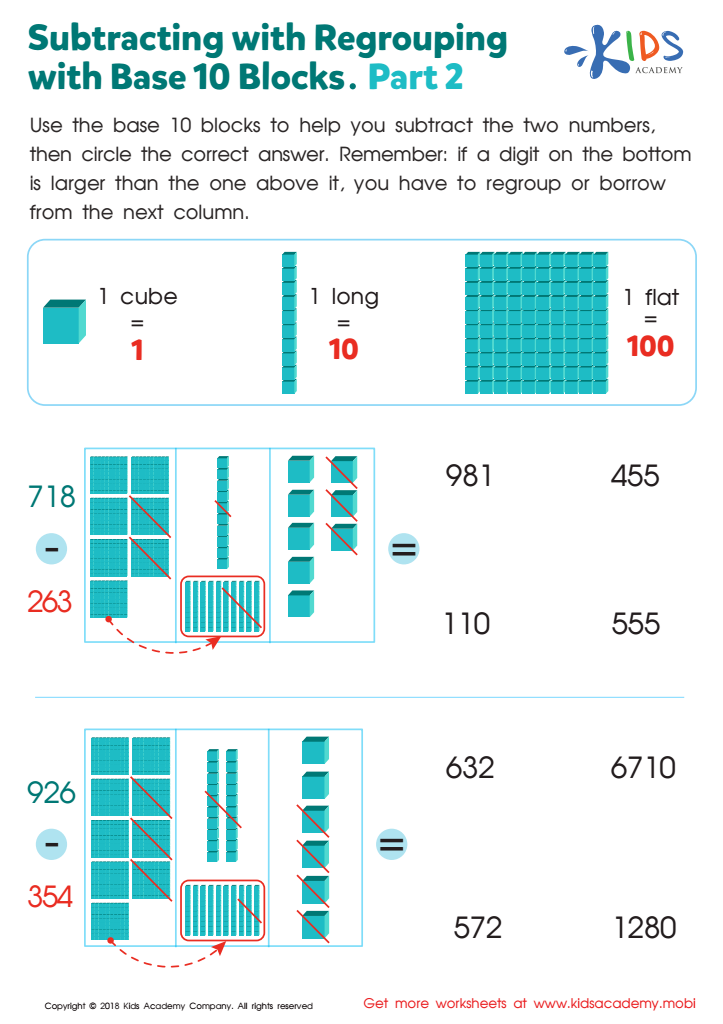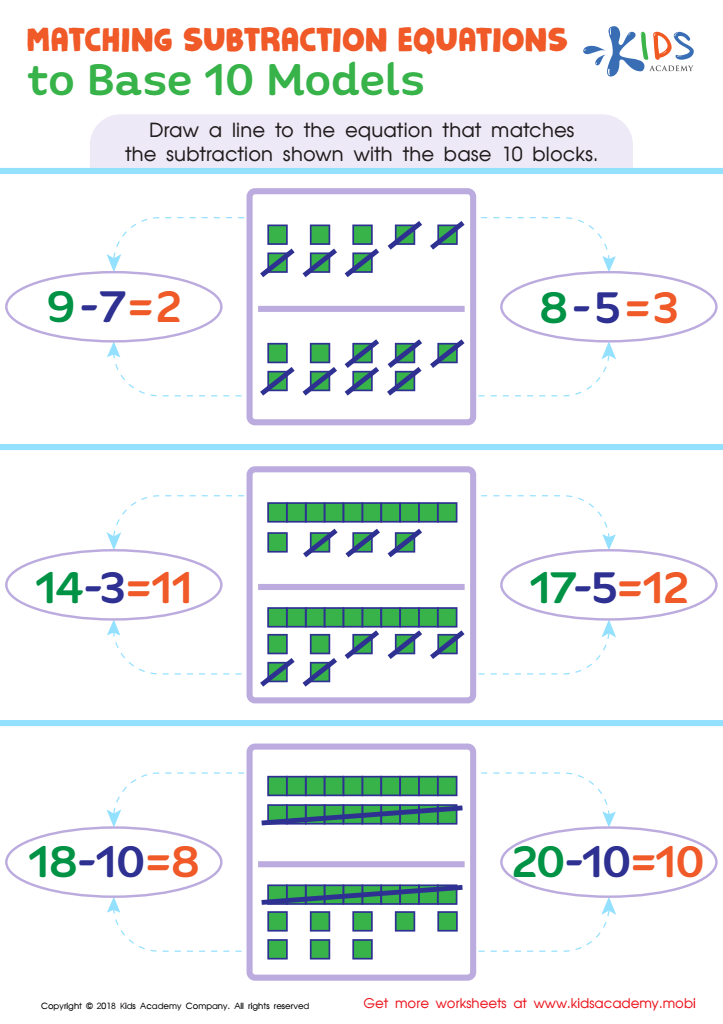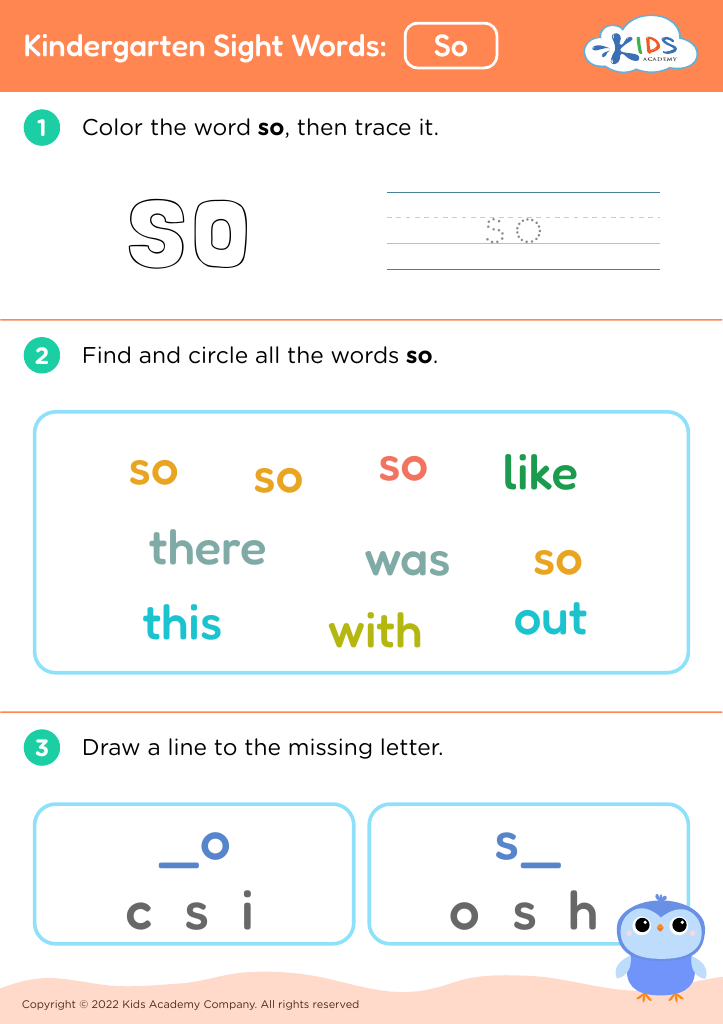Understanding subtraction Worksheets for Ages 6-8
22 filtered results
-
From - To
Welcome to our "Understanding Subtraction Worksheets" for children ages 6-8! These engaging and interactive worksheets are designed to help young learners grasp the concept of subtraction through fun activities and exercises. Aimed at building a solid foundation in math, our resources encourage critical thinking and problem-solving skills. Children will explore various subtraction techniques, including visual aids and number games, fostering a deeper understanding of the operation. Ideal for home and classroom use, these worksheets support early childhood education by making learning subtraction enjoyable and accessible. Check out our collection to help your child become confident in subtraction!


Subtracting With Base 10 Blocks Worksheet


Voting Worksheet


Flying Planes Worksheet


Subtracting with Regrouping with Base 10 Blocks. Part1 Worksheet


Subtracting with Base 10 Blocks Worksheet


Night Sky Math Worksheet


Garage Sale Less Than Worksheet


A Banker's Unknown Numbers Worksheet


Missing Number: Ferris Wheel Math Worksheet


Subtracting with Regrouping with Base 10 Blocks. Part 2 Worksheet


Matching Subtraction Equations To Base 10 Models Worksheet


Stellar Math Substraction Worksheet


Community Helpers: 1 less Worksheet


Subtracting with Base Blocks Worksheet


Which Wagons Have 1 Less? Worksheet


What Equation Is That? Worksheet


Construction Zone Math: Relating Subtraction and Addition Worksheet
Understanding subtraction during the ages of 6 to 8 is crucial for children's cognitive development and future academic success. This is the period when children transition from basic number recognition to more complex mathematical concepts. At this age, mastery of subtraction lays a foundational skill necessary for everyday problem-solving and critical thinking.
Subtraction helps children learn the concept of 'taking away,' which fosters a deeper understanding of numbers, their relationships, and the idea of quantity. When children grasp subtraction, they gain confidence in their mathematical abilities, encouraging a positive attitude towards numbers and problem-solving.
Additionally, subtraction skills are essential for tackling more advanced topics, such as addition and multiplication, which rely on an understanding of how numbers interact. Moreover, competency in subtraction supports real-life applications, like budgeting and time management, which are critical for personal development.
By focusing on subtraction, parents and teachers directly contribute to strengthening these foundational skills. Encouragement and practice can lead to longer-term educational benefits, including improved academic performance and greater enthusiasm for learning. It’s essential to make subtraction relatable through games and everyday activities, ensuring that children see its relevance beyond the classroom.


 Assign to My Students
Assign to My Students























